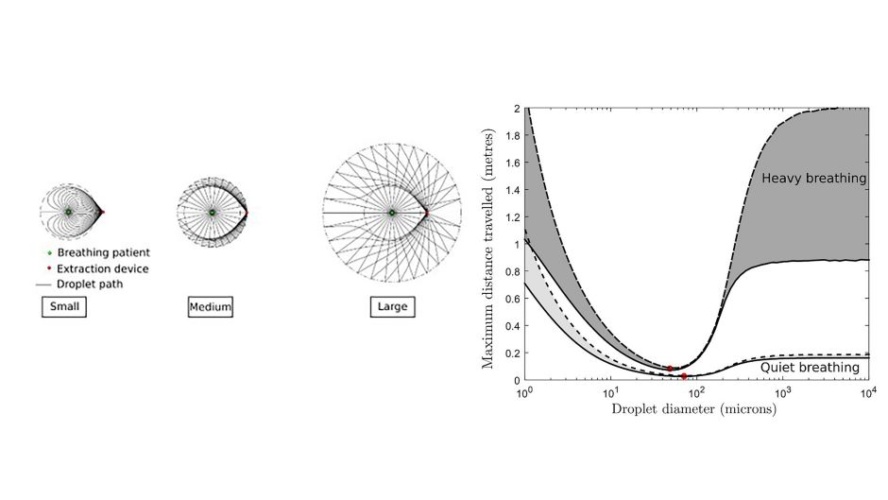
Dr Cathal Cummins of Heriot-Watt’s School of Mathematical and Computer Sciences and Institute for Infrastructure and Environment, devised a mathematical model of droplet spread and is said to have found a clear demarcation between small, intermediate, and large-sized droplets.
Optimising airflow to mitigate coronavirus
CLICK FOR MORE COVID-19 COVERAGE FROM THE ENGINEER
By using simple formulas he and the team, including researchers from Edinburgh University, were able to determine a droplet’s maximum range. The team’s findings are published in Physics of Fluids.
While this model predicted large and small droplets can spread far, the authors found that medium-sized droplets fall very close to the source. The findings follow the World Health Organisation’s warning that aerosol transmission of Covid-19 is being underestimated. If aerosol spread is confirmed to be significant, then governments may need to reconsider guidelines on social distancing, ventilation systems, and shared spaces.
Before this step is taken, researchers say the science community needs a better understanding of how droplets behave when travelling through the air and their dispersion mechanisms based on droplet size.
In a statement, Dr Cathal Cummins, who is leading the research from Heriot-Watt University, said: “The flow physics of someone coughing is complex, involving turbulent jets and droplet evaporation and the rise of COVID-19 has revealed the gaps in our knowledge of the physics of transmission and mitigation strategies.
“One such gap in the physics is a clear, simple description of where individual droplets go when ejected. We wanted to develop a mathematical model of someone breathing that could be explored analytically to examine the dominant physics at play.

“A big surprise for us was when we found that both small and large droplets travel far from the source, albeit for very different reasons. But there are medium-sized droplets that don’t get far at all. This had been previously observed in experiments with people breathing, but the bimodality was typically attributed to a biological function.”
According to Heriot-Watt, this bimodality could be a property of the droplets themselves, and the group has provided formulas to predict when such droplets will have short ranges.
“We can’t afford to be complacent about these small droplets,” said Dr Felicity Mehendale, co-author and academic surgeon at Edinburgh University. “PPE is an effective barrier to large droplets, but may be less effective for small droplets.”
As a solution, Dr Mehendale came up with the idea of creating an aerosol extractor device. The team are working on plans to manufacture the aerosol extractor to keep clinicians safe during aerosol generating procedures routinely performed in medicine and dentistry.
Aerosol extractor units placed close to the sources of droplets can effectively trap them, as long as the droplet diameters are less than about that of a human hair.
“This has important implications for the Covid-19 pandemic,” said Dr Cummins. “Larger droplets would be easily captured by PPE, such as masks and face shields. But smaller droplets may penetrate some forms of PPE, so an extractor could help reduce the weakness in our current defence against Covid-19 and future pandemics.”




Glasgow trial explores AR cues for autonomous road safety
They've ploughed into a few vulnerable road users in the past. Making that less likely will make it spectacularly easy to stop the traffic for...